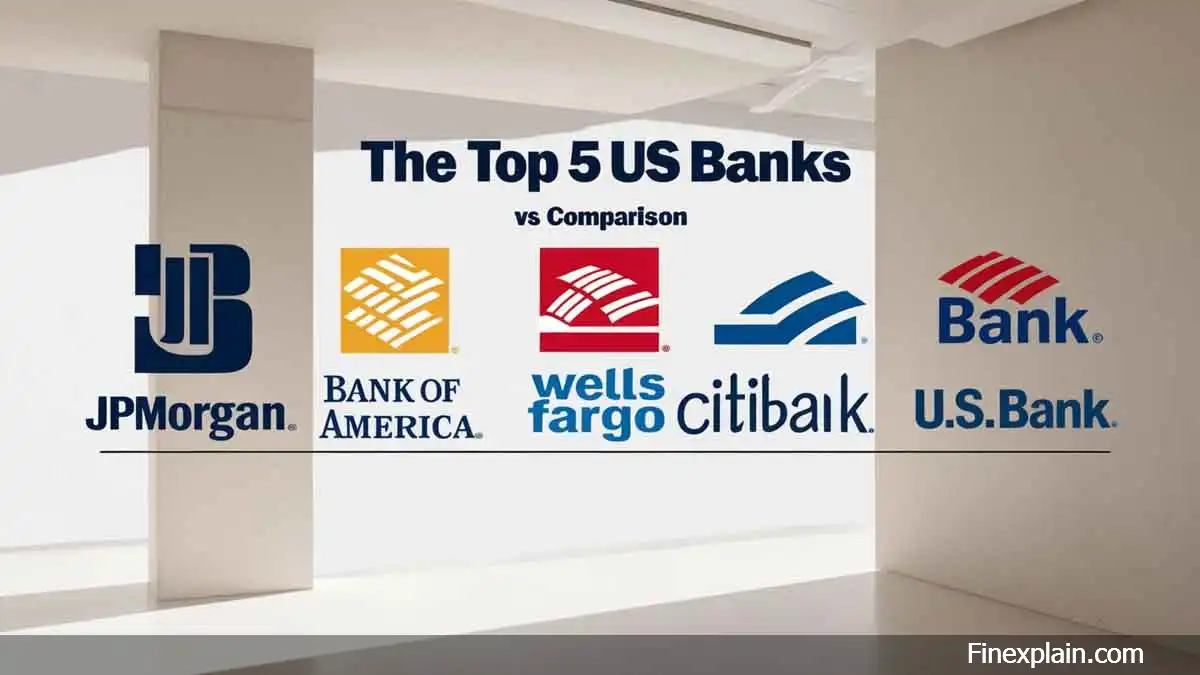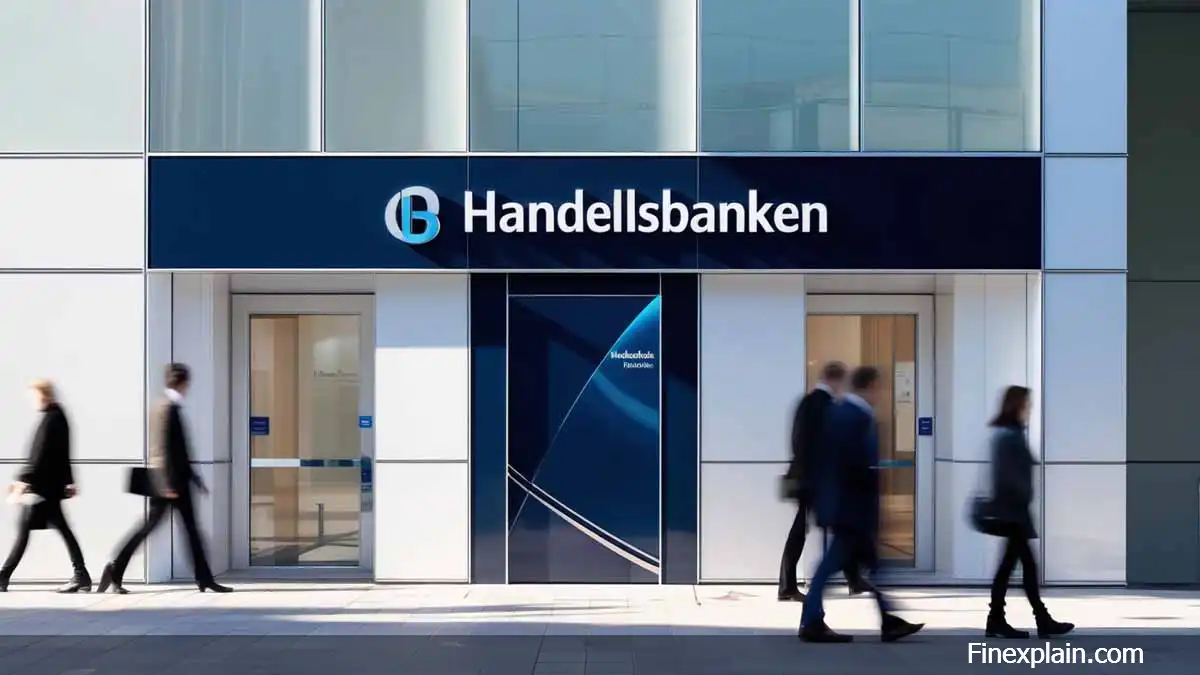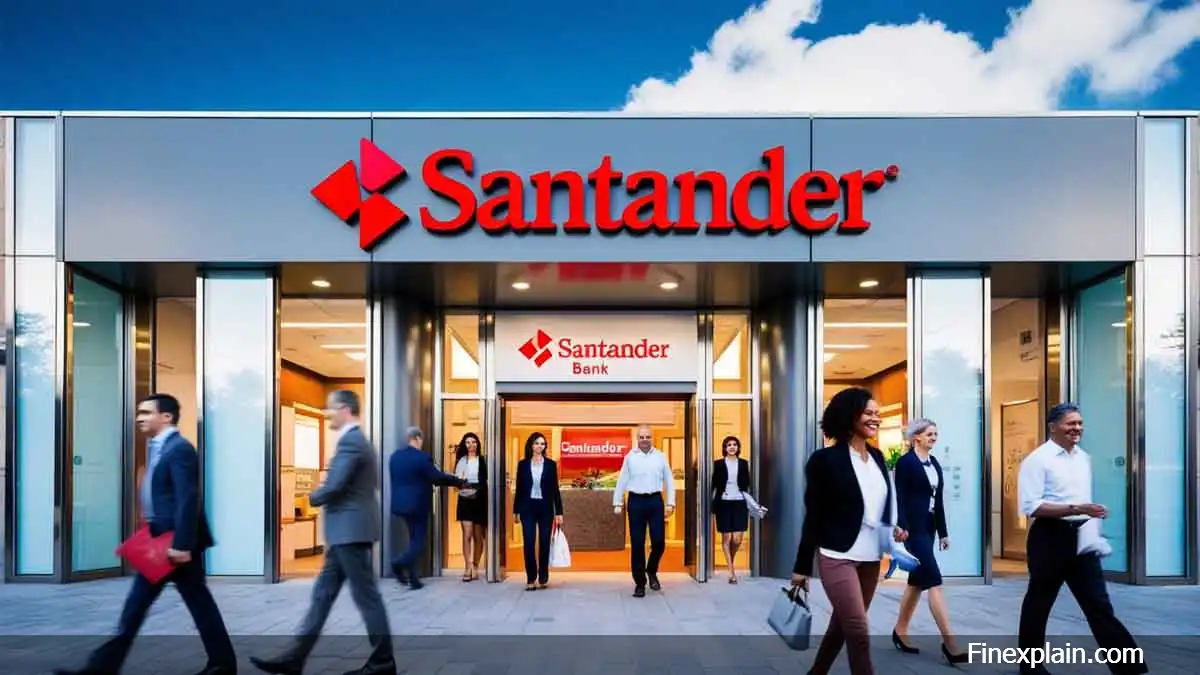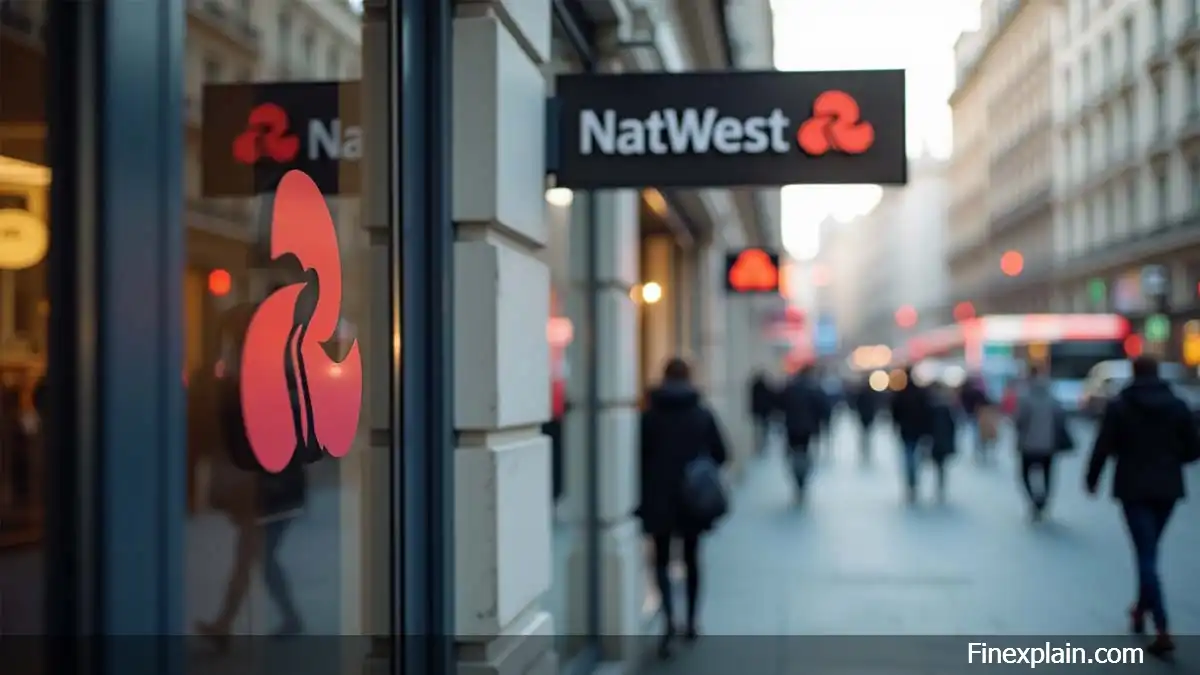Choosing a bank in the U.S. can be tricky — fees, features, apps, and service all vary widely. We compare the five biggest banks in America across key categories to help you make the right choice.
Contents
1. Overview: America’s Five Largest Consumer Banks
When it comes to managing your money in the United States, these five institutions dominate the banking landscape for personal finance:
- JPMorgan Chase & Co. (Chase): The largest U.S. bank by assets, known for its robust mobile app, extensive branch network, and wide range of financial products.
- Bank of America: A strong contender with broad national coverage, competitive bundled services, and digital innovation.
- Wells Fargo: Offers one of the largest branch networks and a wide selection of consumer lending products, despite past reputational issues.
- Citibank: A globally focused bank with fewer branches but access to a massive network of fee-free ATMs and excellent credit card offerings.
- U.S. Bank: Known for good customer service, strong security features, and simplicity, making it a solid choice for straightforward banking.
In the sections below, we’ll compare these banks across account features, fees, digital experience, customer support, and more — supported by charts and data to help you decide.
2. Basic Bank Profile Comparison
Let’s start with a high-level overview of the five biggest U.S. banks, focusing on their size, history, and physical presence across the country.
Table 1: Key Metrics of Major U.S. Banks
| Bank | Headquarters | Total Assets (USD) | Founded | Branches | ATMs |
|---|---|---|---|---|---|
| JPMorgan Chase | New York, NY | $3.9 trillion | 1799 | 4,700+ | 15,000+ |
| Bank of America | Charlotte, NC | $3.2 trillion | 1904 | 3,900+ | 15,000+ |
| Wells Fargo | San Francisco, CA | $1.9 trillion | 1852 | 4,800+ | 12,000+ |
| Citibank | New York, NY | $1.7 trillion | 1812 | 600+ | 65,000+* |
| U.S. Bank | Minneapolis, MN | $650 billion | 1863 | 2,000+ | 4,700+ |
*Includes global partner ATMs
3. Checking and Savings Account Features
The core features of checking and savings accounts can make a big difference in everyday banking. Some banks offer tools like early direct deposit or automatic savings, while others provide more traditional services. Below are the highlights:
- JPMorgan Chase: Offers multiple checking and savings account tiers, automatic savings tools, and overdraft protection. Early direct deposit available with selected accounts.
- Bank of America: Includes Keep the Change® savings automation, customizable alerts, and a solid mobile banking experience with budgeting tools.
- Wells Fargo: Known for its EasyPay card and Save As You Go® automatic savings, but fewer digital budgeting features than competitors.
- Citibank: Offers a wide range of account packages, including high-yield savings (in some regions), and strong integration with Citi credit cards and rewards.
- U.S. Bank: Provides early direct deposit, Goal Savings tools, overdraft forgiveness, and a user-friendly app interface for savings tracking.
4. Account Fees, Interest Rates, and Requirements
Account-related costs vary significantly across banks, from monthly maintenance fees to minimum balances and overdraft charges. The table below outlines how each bank compares on core fee and interest metrics.
Table 2: Monthly Fees, APYs, and Minimum Balances
| Bank | Free Checking Option | Monthly Fee (Standard) | Savings APY | Overdraft Fee | Min. Balance to Waive Fee |
|---|---|---|---|---|---|
| JPMorgan Chase | Yes, with direct deposit or balance | $0–$12 | 0.01% | $34 per item | $500–$1,500 |
| Bank of America | Yes, with conditions | $0–$12 | 0.01% | $10/day (max $40) | $250–$1,500 |
| Wells Fargo | Yes, with direct deposit or balance | $0–$10 | 0.01% | $35 per item | $500–$1,500 |
| Citibank | Yes, in basic package | $0–$25 | 0.01% | $0–$34 | $250–$1,500 |
| U.S. Bank | Yes, easy to qualify | $0–$6.95 | 0.01% | $36 per day | $500–$1,000 |
5. Customer Service and Branch Network
Customer experience is about more than just digital tools. It includes how quickly you can reach support, the quality of help you get, and the accessibility of in-person service.
- JPMorgan Chase: Offers extensive customer support through branches, phone, and messaging. Branches are widely available in urban and suburban areas.
- Bank of America: Known for its virtual financial assistants and multilingual support. Its physical presence is strong, especially on the East Coast and South.
- Wells Fargo: Maintains one of the largest branch networks in the U.S. Response times are solid, but customer trust was impacted by past scandals.
- Citibank: Fewer branches, mostly located in major metro areas. However, 24/7 phone and chat support are highly rated, and ATM access is massive worldwide.
- U.S. Bank: Offers reliable support with shorter average wait times. Many users highlight friendly in-branch service, though coverage is more regional.
Great service is not about having the most agents — it's about being available when the customer needs you most.
6. Mobile App Ratings and Online Banking Experience
In today’s banking landscape, mobile and web platforms are crucial. Users want intuitive design, real-time notifications, and access to advanced features like budgeting, bill pay, and fraud alerts.
- Chase: Top-rated app with a sleek interface, smart budgeting tools, and quick access to credit card rewards.
- Bank of America: Strong online banking platform with helpful insights and Erica, its AI-powered virtual assistant.
- Wells Fargo: Functional but less advanced. Some users report occasional bugs and slower updates.
- Citibank: Solid user interface, especially for credit card integration. Offers account snapshot and quick-lock features.
- U.S. Bank: Highly rated for its simplicity and customized mobile dashboards. Strong on security but offers fewer advanced budgeting tools.
7. Security, Fraud Protection, and Technology
Security is a top priority for all major banks, but the level of detail and control they offer to customers varies. All five banks support two-factor authentication (2FA), biometric login, and real-time fraud alerts.
- Chase: Offers advanced fraud monitoring and a secure message center. Allows temporary card lock and spending alerts.
- Bank of America: Focused on layered security, including AI-based fraud detection and “ShopSafe” virtual card numbers for online purchases.
- Wells Fargo: Includes identity theft protection and automatic alerts, but fewer advanced settings for user-side control.
- Citibank: Notable for strong global fraud protection and fast dispute resolution. Allows users to generate virtual card numbers for each purchase.
- U.S. Bank: Transparent fraud resolution process, ability to freeze cards instantly, and high customer trust in secure transactions.
8. Charts: User Experience and Satisfaction
Chart 1: Mobile App Ratings on iOS and Android
Chart 2: Customer Satisfaction Scores (J.D. Power or Similar)
9. Specialized Features: Credit Cards, Loans, and Perks
Beyond basic banking, these institutions offer specialized products that can influence your choice:
- JPMorgan Chase: Known for its extensive credit card lineup with strong rewards programs like Chase Ultimate Rewards. Competitive mortgage and auto loans. Frequent sign-up bonuses and travel perks.
- Bank of America: Offers a variety of credit cards with cashback and travel rewards, plus the Preferred Rewards program for loyal customers. Solid mortgage rates and auto financing options.
- Wells Fargo: Provides a broad selection of personal and business loans, including home equity lines. Credit cards include cash rewards and low introductory APR offers.
- Citibank: Excels in travel rewards credit cards (Citi ThankYou Points) and global benefits. Offers competitive personal loans and flexible credit options.
- U.S. Bank: Focused on straightforward credit cards with cashback, competitive personal loans, and special perks for military and student customers.
10. Pros and Cons Summary
| Bank | Pros | Cons |
|---|---|---|
| JPMorgan Chase | Excellent app and rewards, largest branch & ATM network, robust loan products | Higher fees, conservative savings rates |
| Bank of America | Strong bundled services, good digital tools, rewards program for loyal customers | Moderate fees, less competitive savings APY |
| Wells Fargo | Extensive branch network, wide loan options | Reputation concerns, less advanced mobile app |
| Citibank | Global ATM access, strong travel rewards cards | Limited branch availability, higher fees |
| U.S. Bank | Good customer service, lower fees, simple and secure app | Smaller footprint, fewer advanced features |
11. Final Thoughts: Which Bank Fits Your Needs?
Choosing the right bank depends on your priorities:
- If you value a comprehensive digital experience and extensive rewards: JPMorgan Chase is hard to beat.
- For bundled services and solid customer loyalty programs: Bank of America offers great perks.
- If branch access and diverse loan options matter most: Wells Fargo’s large network is a plus.
- For frequent travelers and global ATM access: Citibank is the best choice.
- If you want low fees, straightforward service, and strong security: U.S. Bank is a reliable option.
Evaluate your banking habits and needs carefully — and use this comparison to find the best fit for your financial life.
Sources: Official websites of JPMorgan Chase, Bank of America, Wells Fargo, Citibank, and U.S. Bank; Federal Reserve Financial Reports; J.D. Power 2024 U.S. Retail Banking Satisfaction Study; App Store and Google Play user reviews; Consumer Financial Protection Bureau data; Forbes Banking Analysis 2025; The Wall Street Journal financial reports.
Share this article:





